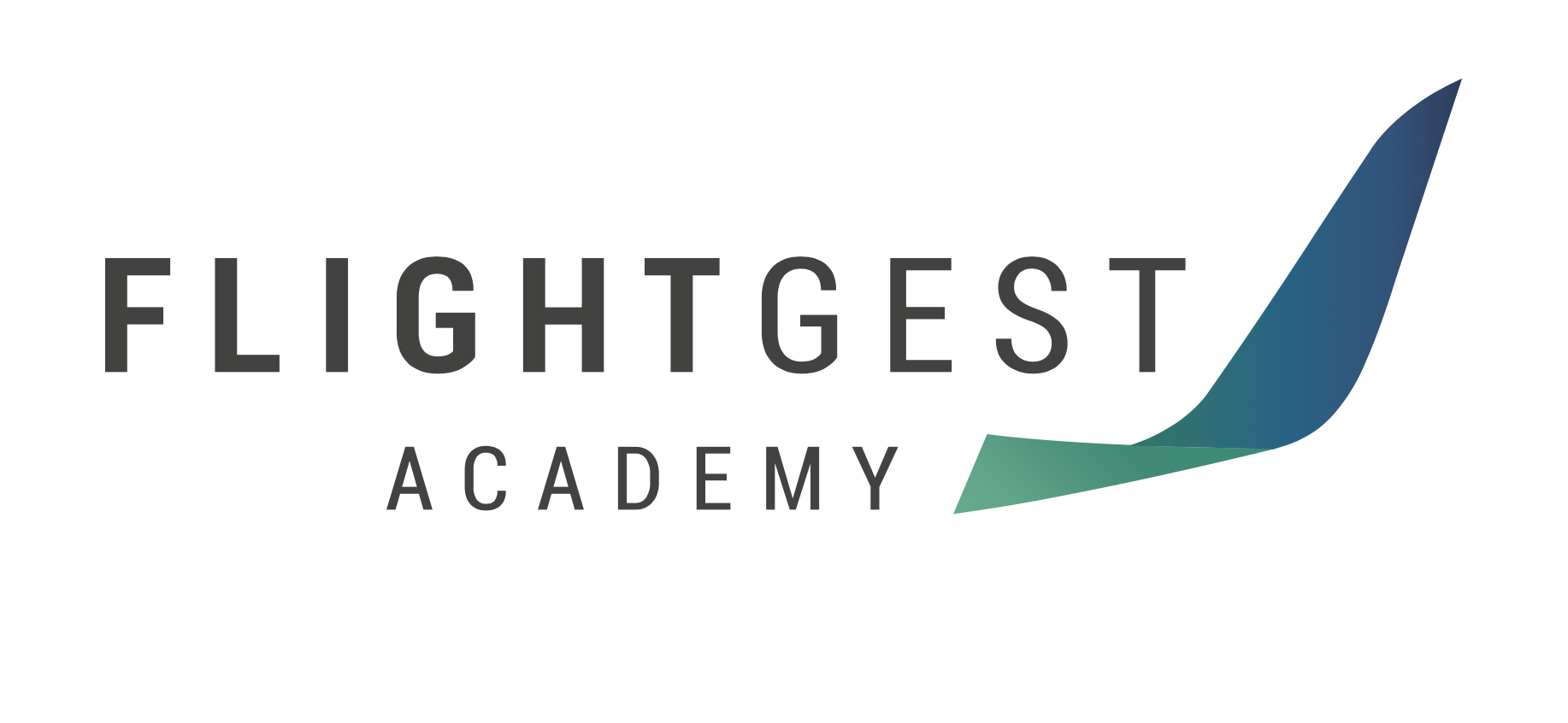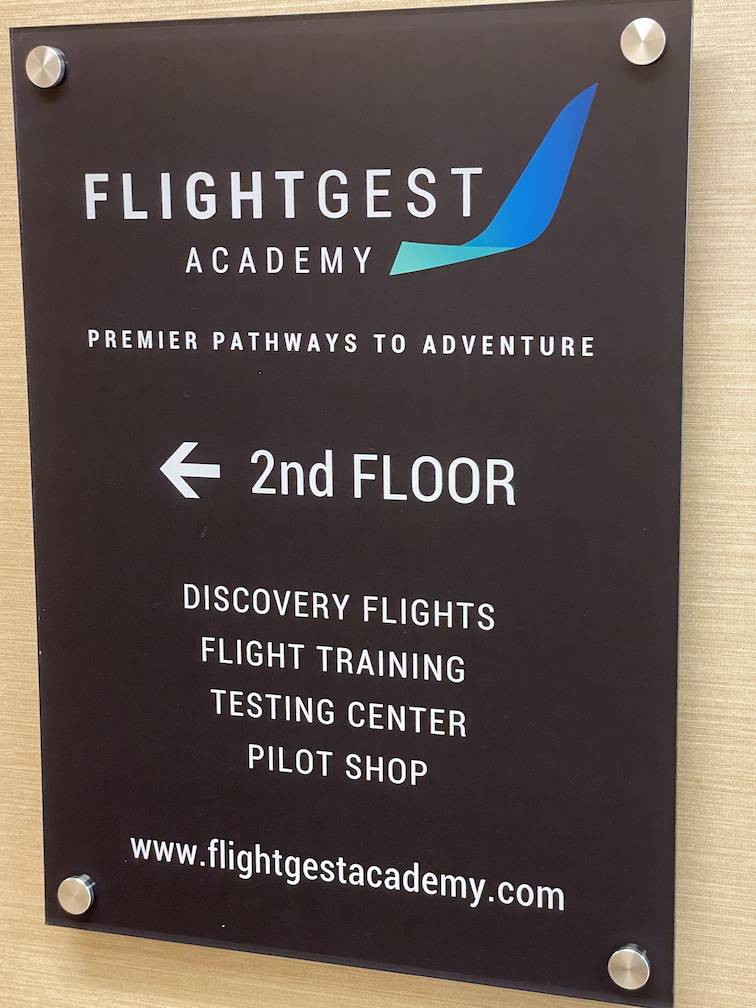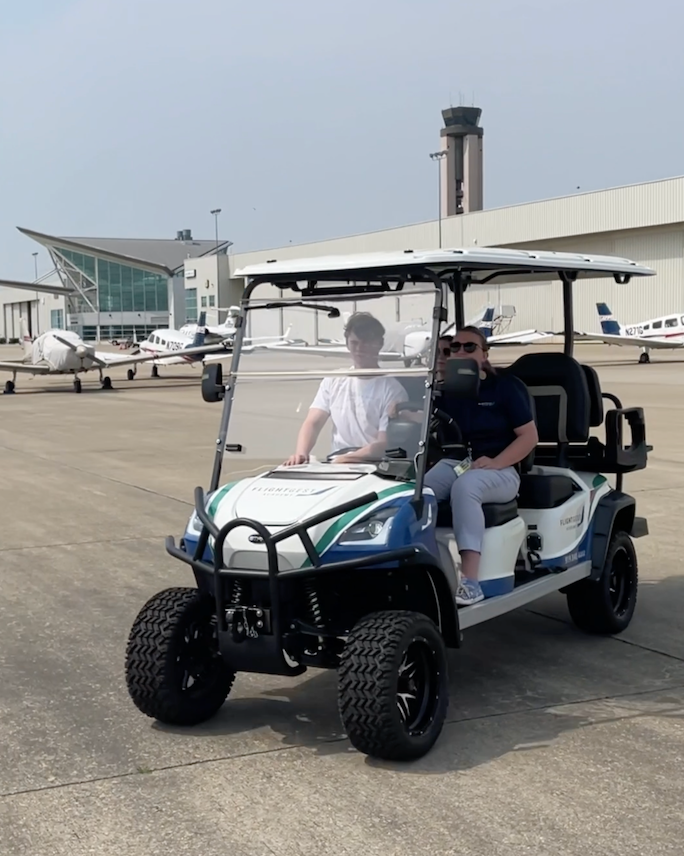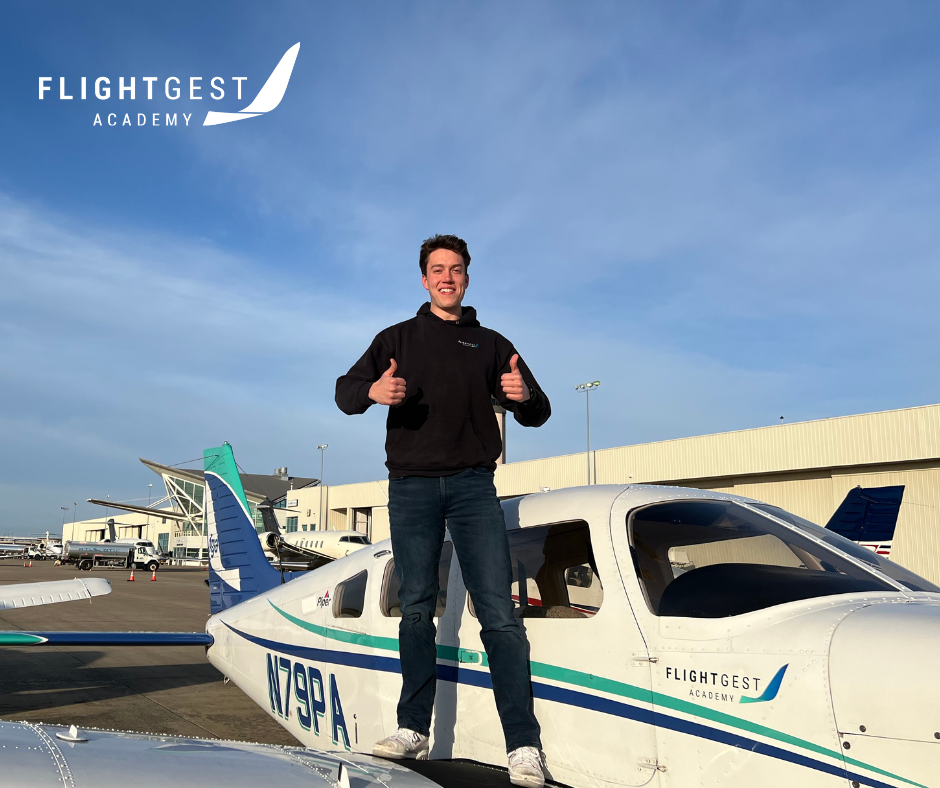
Industry shortages and shifts in technology often create new opportunities, and that’s precisely what’s occurring in the airline industry right now. The industry is seeing an unprecedented shortage of pilots, and the airlines are working to address it through various measures, resulting in easier access to training, faster career advancement, and increased compensation for aspiring pilots.
According to an article published by Aerotime, the root of the shortage can be traced back to a combination of historical challenges and more recent developments. Historical events such as the aftermath of 9/11, the 2007/2008 global financial crisis, and the introduction of the 1,500-hour rule following the Colgan Air crash in 2009 have long contributed to reducing the attractiveness of the pilot profession in the U.S.
Perhaps there has never been a better time to consider a career as an airline pilot, and it all starts with choosing the right flight school.
The profession's allure was further diminished by the COVID-19 pandemic, which led to job instability and a pause in training programs, exacerbating the shortage as airlines used early retirements to cut costs . The end of the COVID-19 pandemic spiked demand for air travel, leading to an acute realization of the pilot shortage, particularly in North America.
The shortage of pilots is further highlighted by the projected demand for aircraft over the next two decades from manufacturers Boeing and Embraer. Embraer, for example, forecasts a worldwide market for 11,000 new aircraft with up to 150 seats over the next 20 years, with an average annual increase of 2.2% in North America. Such demand underscores the importance of addressing the pilot shortage.
To that end, airlines are raising pilot salaries, offering bonuses, and creating pathways for quicker career progression. For example, regional airlines, which have felt the biggest squeeze, are offering competitive bonus packages and forming partnerships with flight schools to facilitate direct pathways for graduates into the cockpit. United Airlines has even started operating its own flight school, aiming to hire 10,000 new pilots by 2030.
Perhaps there has never been a better time to consider a career as an airline pilot, and it all starts with choosing the right flight school. Making the best choice depends on several factors. If you're considering the next steps in your aviation journey, use the following guide to find the perfect flight school that meets your needs and lifestyle.
Budget
Flight school costs can vary significantly. When determining the right school for you, developing a budget is essential. Some schools may offer financial assistance, while others won't.
Aligning your financial situation with your aspirations is the first step in choosing the right flight school.
When asking for a quote, inquire about any additional fees not included in the quote. Ensure you have pricing for flight training, airplane rental, flight instructor, supplies, and flight test fees. Additional fees may also apply depending on the type of license you're pursuing (private, commercial, instrument-rating, etc.).
If you’re considering financing, there’s more than one option available. Ensure the flight school offers a financing option that fits your situation. Ask for information about their financing choices and take the time to review the fine print. The school should be able to give you all the details and help you understand how a given financing option aligns with their training curriculum and fee structure.
Location
While it may be convenient to consider a nearby flight school at a small airfield, it's more important to determine your intent before deciding. Programs at small regional airports may not provide a robust enough curriculum for a career pilot.
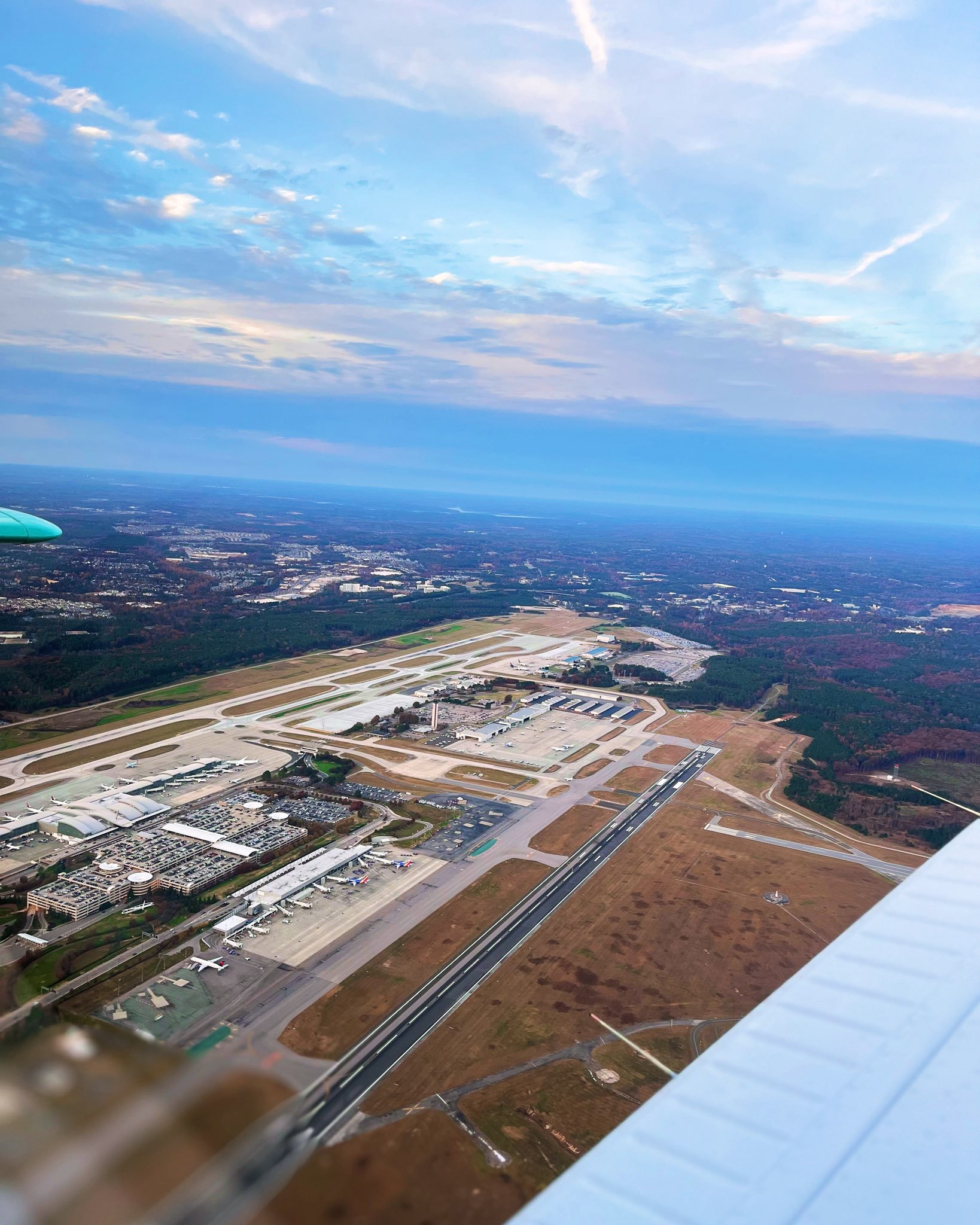
Raleigh Durham International Airport (RDU) - Home of FlightGest Academy
Attending a flight school at a larger airport that supports commercial aviation could provide an advantage. Part of a professional pilot's strength is the ability to communicate with Air Traffic Control (ATC). Choosing a flight school at an airport with controlled airspace, also known as a Class C airport, will allow you to experience and train in an environment that demands daily two-way radio communication with the operational control tower.
Part 61 vs Part 141 Schools
When choosing a flight school, prospective students often encounter two main types of training programs regulated by the Federal Aviation Administration (FAA): Part 61 and Part 141. Understanding the differences between the two can help students select the program that best fits their aviation career goals and personal learning preferences.
Part 61 schools offer a more flexible training structure, which can be advantageous for students who need to balance training with work or other commitments. Instructors have the freedom to adjust the curriculum to the student's pace and needs. The extra leeway also allows instructors the ability to tailor lessons to the student’s strengths and weaknesses, potentially providing a more personalized learning experience.
While Part 61 schools adhere to the same FAA standards for licensure as Part 141 schools, the required flight hours can be higher. For example, obtaining a private pilot license under Part 61 typically requires a minimum of 40 flight hours, whereas Part 141 schools can offer the same license for 35 hours due to their more structured program.
Part 141 schools must adhere to an FAA-approved, structured curriculum with specific course outlines and stringent hour requirements. They undergo regular audits by the FAA and must maintain high standards and pass rates. The structured nature and oversight of the program results in Part 141 schools being able to offer a reduced minimum number of flight hours for some ratings and certificates, potentially lowering the overall cost and time invested in flight training.
Another consideration is Veterans' Benefits and Financial Aid. Students attending Part 141 schools are more likely to be eligible for veterans’ benefits and certain types of financial aid, as these institutions often meet the requirements for such funding.
Facilities
Researching flight schools should include a tour of the facilities. Observing the learning environment can provide valuable insights into your potential student experience. What is your first impression when you walk in the door? Is it professional, organized, and clean? Ask to see the briefing rooms, simulator, maintenance hangar, and training rooms. Hesitation to show you around should be a red flag.
Touring the facilities and experiencing a school’s atmosphere and level of professionalism first hand is an absolute must-do step in the process of evaluating flight schools.
There's only so much you can learn from a website, online forum, or brochure. Touring the facilities and experiencing a school’s atmosphere and level of professionalism first hand is an absolute must-do step in the process of evaluating flight schools. An on-site visit allows you to get a sense of the school's culture, the professionalism of the staff, and whether the environment feels supportive and conducive to learning.
Fleet
While touring the facility, inspect the fleet. Are the planes new and well-maintained? What is the maintenance schedule? Knowing these details helps make an informed decision when choosing your flight school.
Variety and Quantity
A flight school with a diverse fleet offers you the invaluable opportunity to train on different types of aircraft, from single-engine planes for beginners to multi-engine models for advanced learners. Additionally, simulators should be part of the fleet, providing a risk-free environment for practicing scenarios that are hard to replicate in the air. The size of the fleet is equally important; more aircraft mean better scheduling flexibility and more flight time for you.
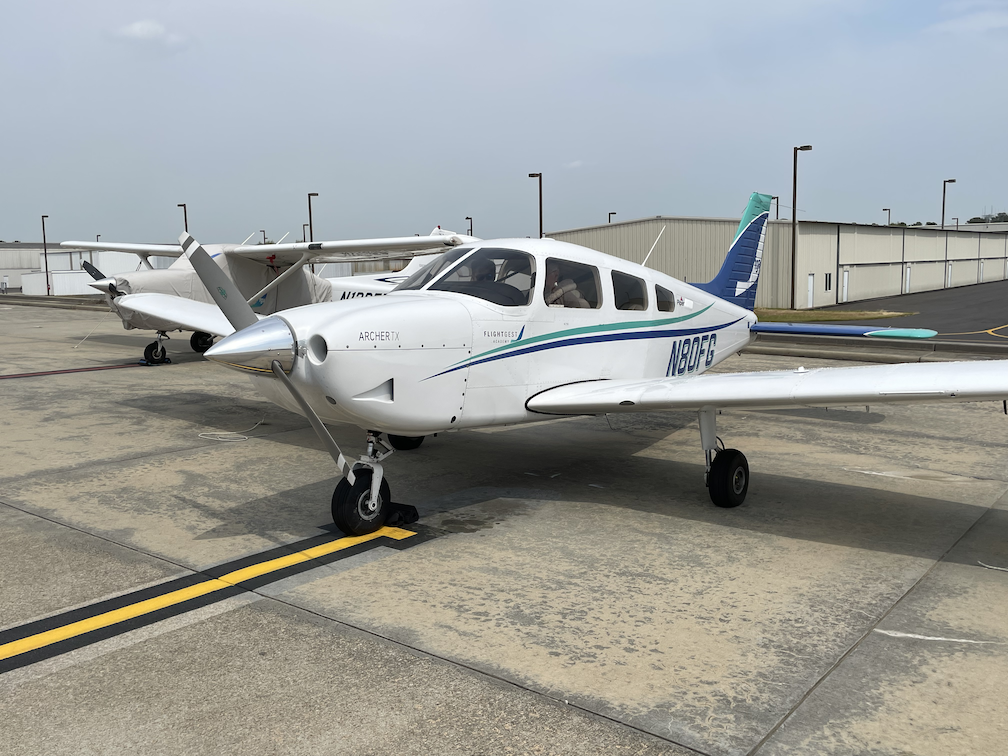
FlightGest Academy owner Ron Kuist with wife Amy and daugher Piper
Aircraft Age and Maintenance
The age of the aircraft in a flight school’s fleet can tell you a lot about the training you’ll receive. While newer planes are equipped with the latest technology, older ones can offer a more hands-on feel of flying. However, the key lies in the maintenance standards. A well-maintained older aircraft can be just as reliable as a newer model.
Technological Advancements
In today’s digital world, being proficient with modern avionics is a must for any aspiring pilot. Ensure the school’s aircraft are equipped with up-to-date technology. This prepares you better for a career in aviation, where such technology is standard.
On-Site Maintenance
There's nothing worse than having your training delayed or put on hold because a plane is down for maintenance. The presence of an on-site maintenance facility is a strong indicator of a flight school’s commitment to safety and reliability and ensuring planes are always available for students. As a student, you want to know that the school's fleet undergoes regular maintenance with minimal downtime. Be sure to inquire about the school's maintenance practices and how they keep their fleet in prime condition for training.
Reputation
Researching the school's reputation can provide a key insight into what your future could look like before and after attendance. You’ll want to evaluate the quality of training, success rates of its students, safety rating, networking and career opportunities, accreditations and affiliations, and overall student satisfaction.
While much of the information you’re looking for can be found online, don’t be shy about asking questions as you tour the school’s facilities.
Check the school’s website, online forums, and reviews to gain insights from alumni. While subjective, this information can help you understand the program from a personal perspective. If possible, connect with a current student during your facility tour or ask to be put in touch with some current students. Accounts from current students will give you a glimpse of what your future could look like on this path.
While much of the information you’re looking for can be found online, don’t be shy about asking questions as you tour the school’s facilities. How does the school maintain its aircraft, manage defect reports, and uphold safety standards? What networking and career opportunities do they offer? Are they affiliated with any industry associations? Can they share the employment outcomes of past students?
Again, don’t be afraid to ask questions. Choosing a flight school is an investment in your future, and getting a clear picture of what your experience will be like is critical to making a sound long-term decision.
Conclusion
The burgeoning need for skilled aviators, fueled by a rebounding travel industry, has led to a more accessible route to the cockpit. Perhaps more than ever, the industry offers enhanced training opportunities, accelerated career advancement, and rewarding compensation packages.
Choosing the right flight school is the first step in a journey that promises not just a job, but a lifestyle defined by adventure, responsibility, and the joy of flight. Whether you lean towards the flexibility of Part 61 or the structured rigor of Part 141 training programs, your decision will lay the foundation for your aviation career. Each path offers unique advantages, from tailored learning experiences to streamlined pathways to the cockpit, ensuring a route to fit your circumstances.
Picking the right school for you requires considering logistical, financial, and personal preferences. By prioritizing your needs and rigorously researching potential schools, you are more likely to find a training partner that meets your expectations, fits your learning needs, and equips you for the thrilling challenges of aviation.
Ready to Evaluate Flight Schools?
We encourage you to visit FlightGest Academy and check out our facilities. Book your discovery flight today or contact our admissions staff to schedule a tour.
